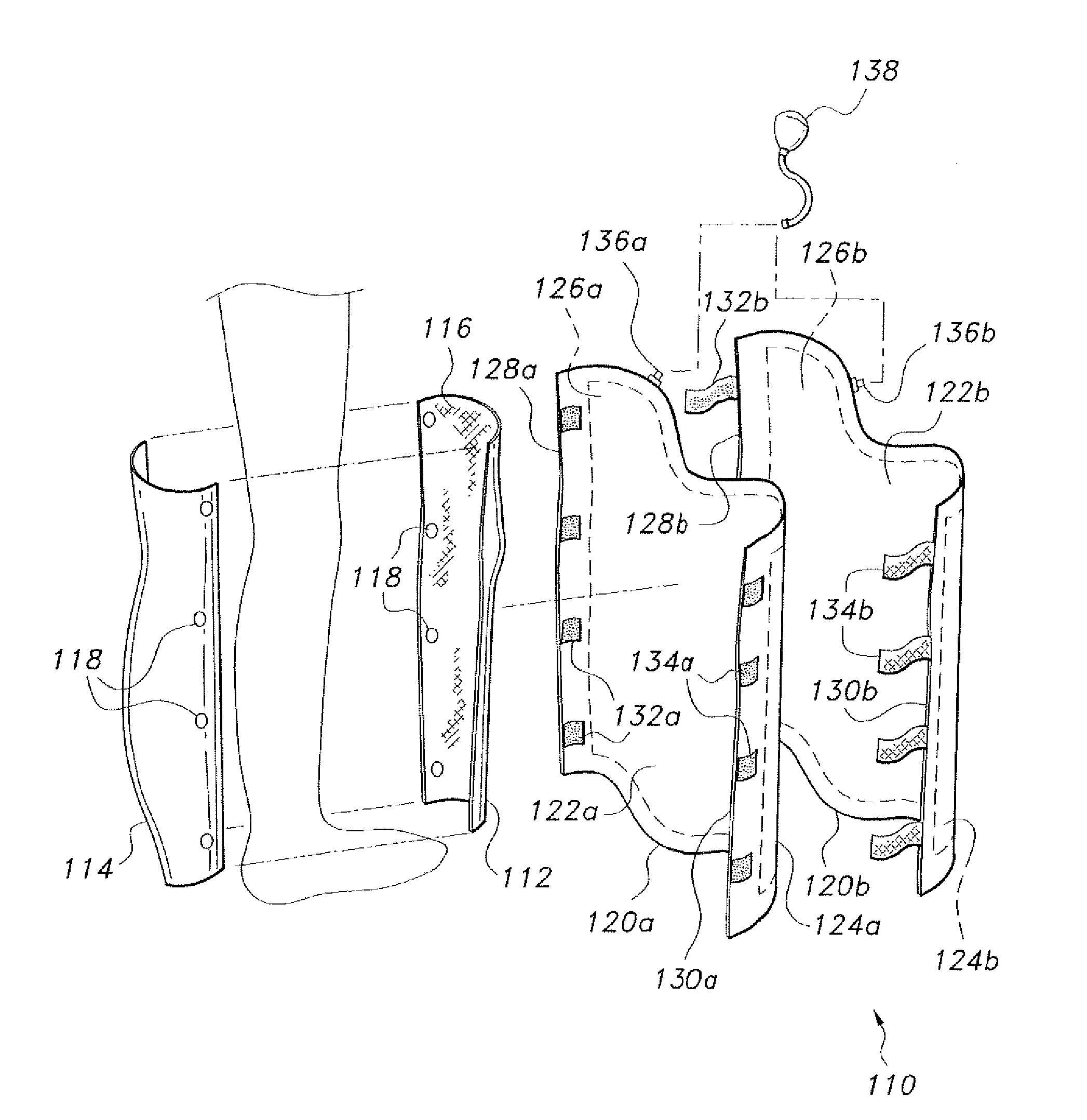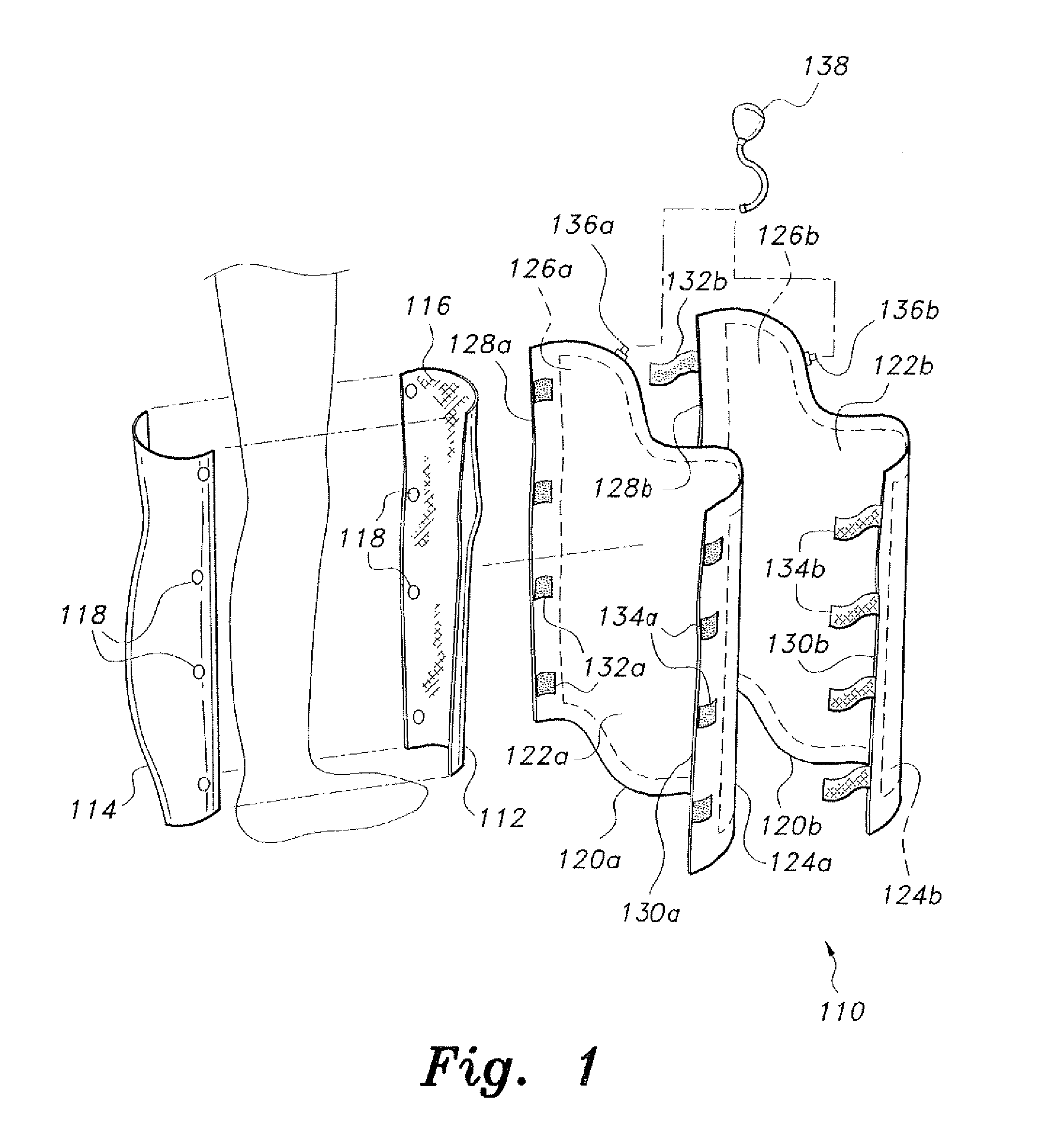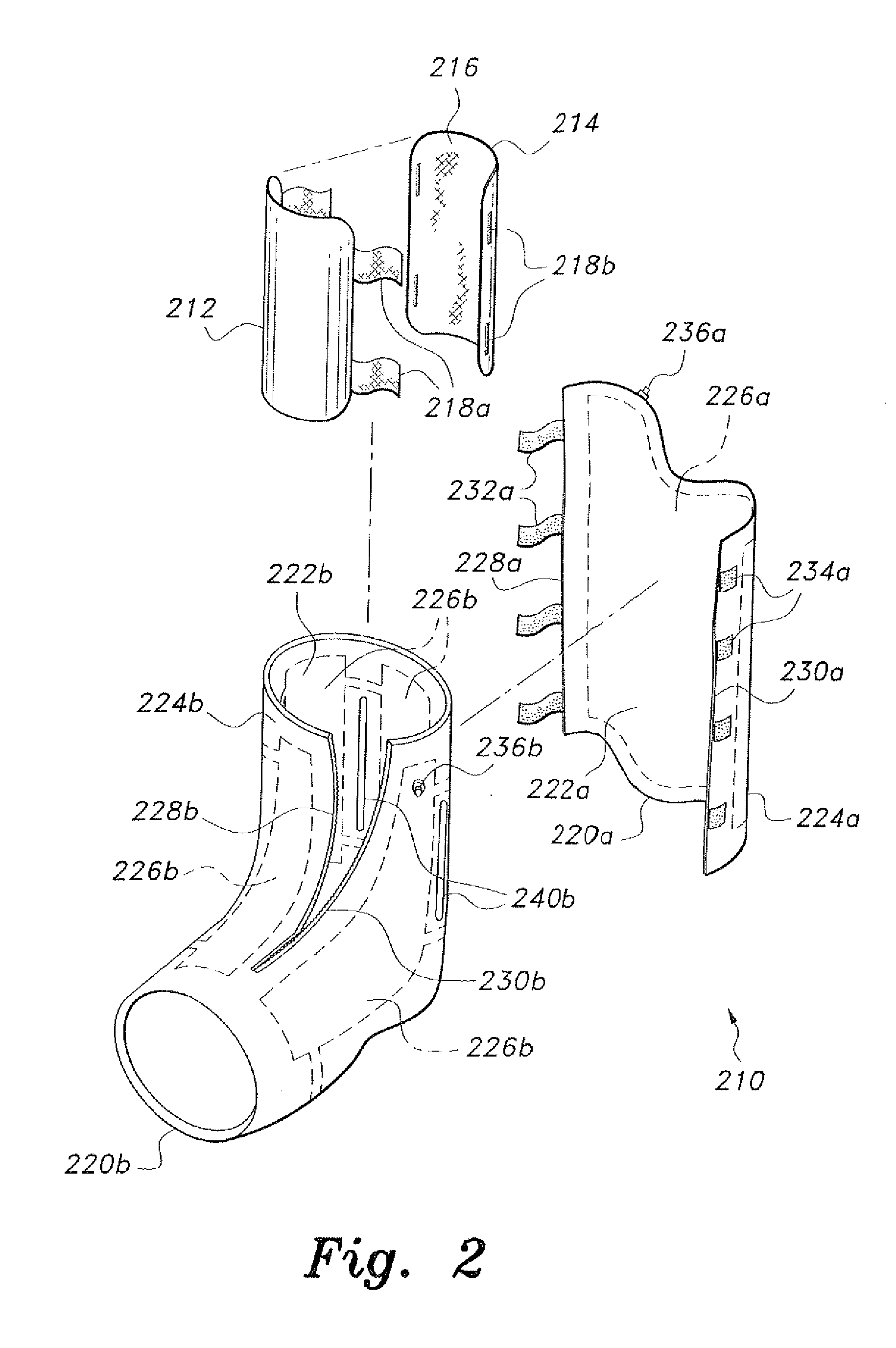Inflatable splint
- Summary
- Abstract
- Description
- Claims
- Application Information
AI Technical Summary
Benefits of technology
Problems solved by technology
Method used
Image
Examples
first embodiment
[0017]FIG. 1 of the drawings illustrates the inflatable splint. The inflatable splint 110 of FIG. 1 is configured for placement over an injured leg. The inflatable splint 110 includes a thin, semi-rigid, anatomically conforming inner shell formed of plastic, glass fiber composite, carbon fiber composite, or other suitably lightweight thin material. The shell is formed as a forward half or portion 112 and an opposite rearward half or portion 114 in the exemplary embodiment of FIG. 1. It will be seen that the shell components 112 and 114 may be formed as two lateral portions, or otherwise portioned, as desired. The shell components 112 and 114 may be configured in several sizes to fit various sizes of individuals, from smaller children to larger adults. The shell components 112 and 114 are preferably lined or covered with a soft knit or woven fabric material 116, for the comfort of the wearer. Alternatively, a conventional sock or sleeve extending the length of the shell components 11...
second embodiment
[0020]FIG. 2 of the drawings illustrates an inflatable splint comprising an inflatable splint 210 for the ankle, foot, and / or lower leg. The inflatable splint 210 of FIG. 2 is configured similar to the inflatable splint 110 of FIG. 1, having first and second semi-rigid shell portions 212 and 214 that secure about the lower leg or ankle immediately adjacent the skin. The two shell portions 212 and 214 may be formed the same materials as used for the shell portions 112 and 114 of FIG. 1, and may be formed as forward and rearward halves, lateral halves, or other portions, as desired. The shell components 212 and 214 are configured in several sizes to fit various sizes of individuals, and are preferably lined or covered with a soft knit or woven fabric material 216 for the comfort of the wearer. A sock or sleeve may be applied to the body before the shell components 212 and 214 are installed, if desired, as in the case of the inflatable splint assembly 110 of FIG. 1. The two components ...
third embodiment
[0025]FIG. 3 of the drawings illustrates the inflatable splint, designated as inflatable splint 310. The inflatable splint 310 is configured to fit about the elbow of the wearer or patient, the device extending at least partially upward along the upper arm toward the shoulder and at least partially downward along the lower arm toward the wrist. As in the case of the other embodiments of the inflatable splint, the splint 310 includes a two-part inner shell formed of thin sheets of semi-rigid material. The two shell components 312 and 314 are preferably lined with a soft fabric liner 316, as in the case of other embodiments. The two components or portions 312 and 314 have cooperating fasteners 318a and 318b, e.g., mating hook and loop fabric material, extending from their mating peripheries. Alternative fasteners, e.g., tabs, snaps, ties, etc. may be provided.
[0026]The inflatable splint 310 of FIG. 3 includes only a single pneumatically inflated overlay 320, rather than having two suc...
PUM
 Login to View More
Login to View More Abstract
Description
Claims
Application Information
 Login to View More
Login to View More - R&D
- Intellectual Property
- Life Sciences
- Materials
- Tech Scout
- Unparalleled Data Quality
- Higher Quality Content
- 60% Fewer Hallucinations
Browse by: Latest US Patents, China's latest patents, Technical Efficacy Thesaurus, Application Domain, Technology Topic, Popular Technical Reports.
© 2025 PatSnap. All rights reserved.Legal|Privacy policy|Modern Slavery Act Transparency Statement|Sitemap|About US| Contact US: help@patsnap.com



